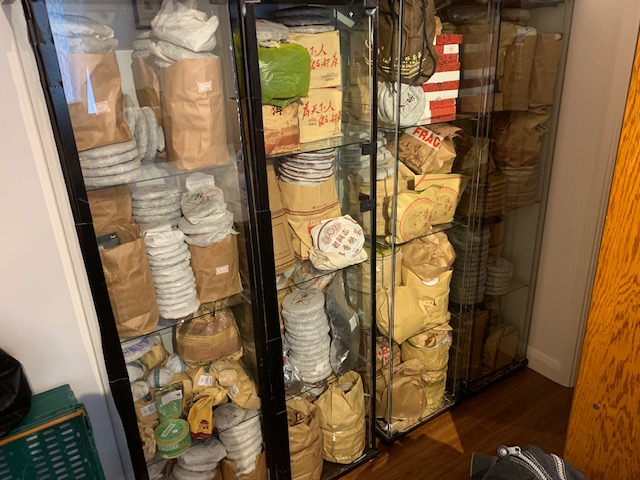
The basics of Pu Erh tea storage
I had an email from a client this morning who has been building his little empire of Pu Erh tea up to a point that he can no longer see when it will all get drunk…hmm, a common dilemma for us all 🤔. How to keep this tea in a good place for the future? Enter the topic of Pu Erh tea storage!
P.S: I’ve left some of the praises in to feed my own narcissistic tendencies!
Message from client X:
I’d like to say you that I’m really happy with the incense and the tea. All of good quality. I’m still trying them out, trying to figure what I like best. I started with my favorite to be taiwanese teas and now I think I’m leaning more towards ripened pu erh.
In general, this morning I drunk the remaining sample of “2012 ‘Qiansui’ Menghai Old Tree Ripe Pu Erh Tea Cake – 25g” and after so many hours I still have the taste in my mouth, so you can understand how satisfied I am with your teas. It’s been 1 year since I’m into tea and I’ve tried other vendors before and I have to say that you have very reasonable prices.
Finally, I have a question on ripes. I still have too much tea left and I’m planning to buy some of your ripened cakes next year and I’d like to know if they’re sealed or if the white wrapper they contain is enough and can I have this for years? Should I be aware for mold issues or anything like that?
Response:
Hello client X,
I’m glad to hear that you are enjoying our tea!
Yes, most of the Pu Erh cakes come with a paper wrapper, that is all that’s needed to store the tea. Try to keep the tea away from strong smells, Tea is like a sponge that will collect aroma from the surrounding environment! It is best to store your tea in a glass container with some humidity (60-70rh). Regular airflow is also important. Actually it’s best to have a gap in your container some the tea can breath a little too. Mould will appear when humidity levels breach 75%RH and airflow is poor. Also it’s very important to mention that if there is poor airflow your tea will taste muddled and the flavour will kind of homogenise, similar to wet storage but not in a nice way! I must also say that the material you choose to store your tea in is of the utmost importance. Many places on the internet recommends hard plastic but recently I have moved away from my Alaric all together as I believe it to be reactive with the tea over long periods. Glass I believe to be the best solution. It’s non reactive. Potentially a veneer wood would suffice but I don’t have any long term study on this. Humidity can be achieved fairly easily with water beads, sterile wet clay or even a cup of water in the tea container. Please remember that tea acts like a sponge and once enough humidity is within the container it will self regulate and you will find that you will need to add less and less water to the container over time. Tea humidity and ageing of tea is easier to control when the container is packed with lots of tea, opposed to a large space with less tea inside.
I hope this helps!

So make sure that if you display your tea on open shelves or in areas with too much light, you relocate the tea to a new spot away from the light source. Ideal Temperature Setting for Pu-Erh Tea Storage So now that you found a few possible locations that satisfy the ideal light setting, let’s talk about the next element on the list: temperature.